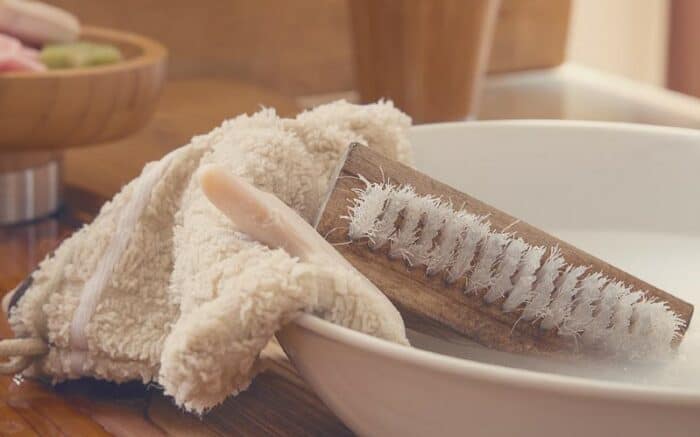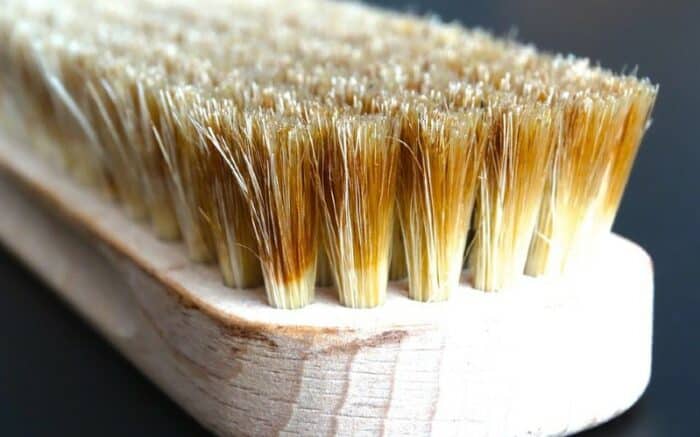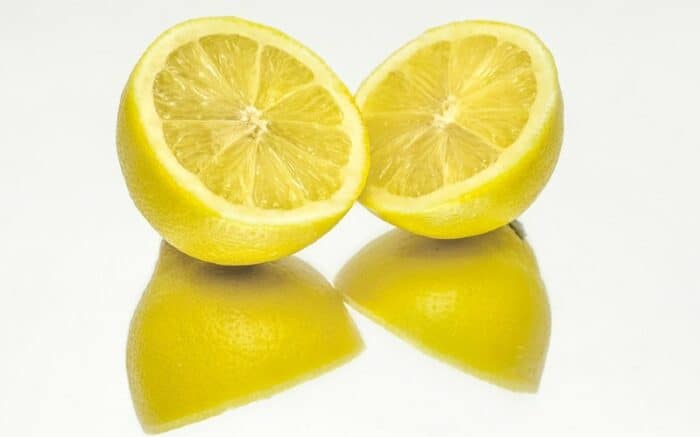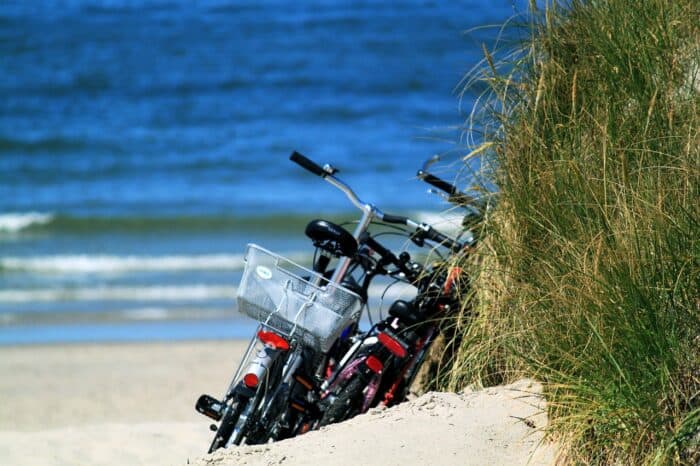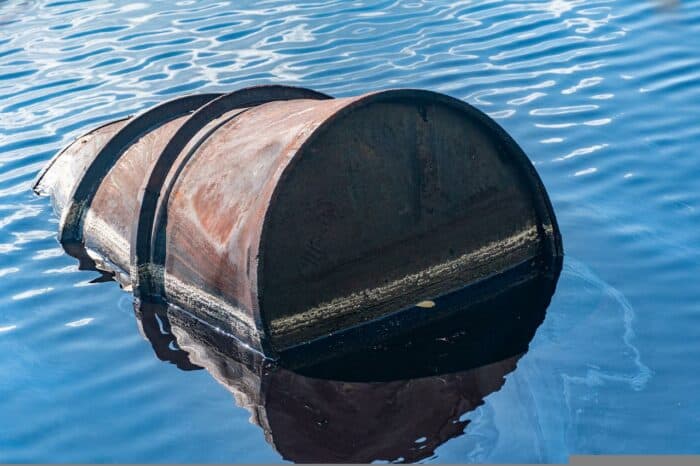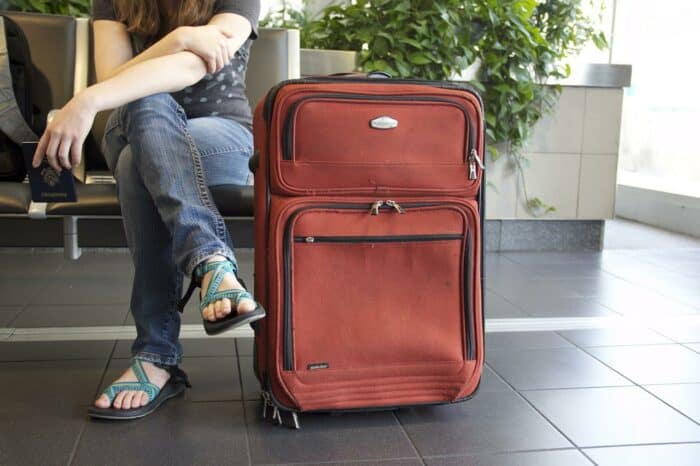How to Clean a Tent with Mold
Every year when camping season comes around it’s exciting to get your chairs, and cookware, and tents together, load up the truck, and head out. But, if you’re like most campers, you may find yourself spending a little more time on prep than you want. Especially if your tent was stored improperly over the off-season. Whether it was put away damp, or left in a damp place by accident, sometimes months of being folded up in the dark can lead to the growth of mold and mildew.
If you find yourself stuck with a smelly tent covered in patches of dark mold and mildew all hope is not lost! No need to go out and buy a new tent just yet when there are quick and fairly inexpensive ways to fix the problem yourself ahead of your next camping trips.
Cleaning Up Mold and Mildew
Ideally your tent got put away clean but that doesn’t always happen. Make sure you shake the tent out and then set the tent up like you normally would. Use a vacuum if need be to get all the dry bits of dirt and leaves and so on out of there. Now, if you have mold and mildew, you’ll need to take special care to get it cleaned up.
Mold spores can be very dangerous to breathe in. Remember, whole buildings can be condemned thanks to black mold infestations. This stuff can cause serious lung damage and even lead to death if you breathe it in for too long.
Use a damp cloth when checking for mold and mildew. Because your tent is out in the woods it’s likely going to get exposed to things like mud and tree sap and all kinds of other things. So you may not even have mold, you may just think you do. Both mold and mildew tend to form in patches that are thicker and darker in the center and may spread out in a spotty sort of pattern.
Use a cloth and try to wipe what you’re seeing away. Dirt will come away easily but mold likes to hold on tight, so it’s less likely to move. You’ll need to really scrub to get most of the mold off and, even then, you won’t get very far with just a damp cloth. So if you’re sure it is mold, then you’re ready to roll up your sleeves and use a little elbow grease to get it clean.
Try the Vinegar Method
My go-to method for cleaning a tent is to use plain, white vinegar. It’s probably the most environmentally friendly cleaning choice you’re going to get and it’s also the cheapest. Vinegar doesn’t cost a lot and you can use it to clean a hundred things around the house, so it’s never a bad idea to keep a jug under the sink. It’s very unlikely vinegar will damage your tent, no matter what it’s made of. Still, if you’re worried, test a small corner of the material first by spraying some vinegar and letting it sit for a while to see how the tent reacts.
Use your brush to scrub the mold before wetting it to get any chunks loose. Obviously, you want to be doing this outside. It’s best to use a softer brush on vinyl and plastic tents. If you have canvas you can use something a little stiffer but don’t use a wire brush.
All you need for this is vinegar and a clean spray bottle. Use about a half cup of vinegar to a cup of warm water. That’s a strong mix but it should get the job done. You can use a little less vinegar if you feel like it’s overwhelming. Vinegar is a good odor eliminator so it can get rid of that funky mold smell. That said, not everyone likes the smell of vinegar so it may be trading one bad smell for another.
Spray the patches of mold and let it soak in for several minutes. The acid in the vinegar will start to eat away at the mold and help loosen it from the surface of your tent. Depending on what kind of tent you have this may allow it to wipe right off or just loosen it enough for scrubbing. Remember, a canvas tent with mold is going to be a harder cleanup than one made of some kind of synthetic because it will really get into those fibers and discolor them.
After letting it soak for maybe five minutes, use a gentle scrub brush and try to scrub the spots clean. Keep a tub of warm water on hand to rinse the brush as you go. Don’t use anything too harsh here, you don’t want a wire brush that will damage the material of the tent. Just firm but gentle scrubbing with a soft to medium soft brush of some kind.
Soap and Warm Water
If you don’t have vinegar handy, good old soap and warm water is also an easy method for cleaning up mold and mildew sometimes. You don’t need to use hot water here, just warm will suffice. It’s possible the mess will be too much for soap and water to handle on its own but you should at least try it first before you move on to something that is stronger and will cost you money.
The best soap to use on a tent when cleaning mold or mildew is a non-detergent soap. Detergents are additives that make soap foam and clean better, but they are synthetic. They tend to damage certain materials and they could be bad for your tent. But it’s also hard to find non-detergent soaps. Yes they’re natural and safe to use, but they can cost more, too. Something like castile soap is ideal. But listen, if that’s not an option, just use a gentle soap and hopefully something environmentally friendly. You’ll want to try to avoid any fragrances, especially fruity ones, to keep bugs from being attracted to your clean tent.
Use warm water and a little soap if you’re sure the soap is safe for your tent material. Scrub with a gentle brush or cloth to loosen up and remove the mold spots. Rinse the soap as best you can when you’re done and let the tent air dry completely away from direct sunlight.
Use a Mold and Mildew Cleaner
Those last two methods may have left you with a half clean tent. Some mold and mildew, if it was really bad, is nearly impossible to clean. That’s when you need to look for something stronger.
Cleaners specially designed to fight mold and mildew are made with enzymes that actually break down the cellular structure of the mold. These are typically safe for most fabrics and won’t ruin the color of your tent, but it’s always best to chest first.
Follow the directions on whatever cleaner you purchased. These can change from product to product and may require you to let the product soak in for several minutes or even to dry first. This should be the best and most thorough method for cleaning the mold and mildew off of your tent, especially if the other methods fell short. If this doesn’t work then you have maybe one final idea to try.
Soaking to Clean a Tent with Mold
The last thing you can try if all else fails is to go hard at that mold with a deep cleaning. Once you’ve cleaned as much as you can, if there is still residue, you may want to do a full soak. Fill a tub with warm water and dilute a solution of an enzymatic cleaner in the water. Again, follow the directions to get this done right. Different cleaners work at different concentrations.
Unzip all the flaps and flies on your tent, turn it inside out, and then dunk it in the tub. Make sure the material gets fully saturated and then you’re going to have to wait. Your cleaner of choice should let you know how long. You don’t want to over soak as that could damage the material. It’d be awful to go through all this effort only to ruin the tent yourself.
Scrub any of those difficult spots at the beginning and then again at the end. Make sure you thoroughly rinse the tent when done and allow it to dry fully.
Spot Cleaning Mold and Mildew
One of the worst problems with mold and mildew is the mess it leaves behind. Mold stains are notoriously hard to remove from tent fabric. You may kill it with your cleaners but have real problems getting the dark stains out of your tent. If you have a light colored canvas tent, this can look very ugly. So what do you do?
The urge to bleach it is always present and maybe you can do that. Maybe. It really depends on what kind of tent you have. Bleach could seriously damage some tents so you need to be careful. Not much good to clean a dark spot only to leave a bleach spot.
There are non-chlorine bleaches that may be less harsh on the fabric. Best to read the label and spot check ahead of time, though. You can try color-safe bleach as well, the kind you’d use in your laundry. But if you’re worried about using that, a natural way to help strip the color is lemon juice. You may need to use a good portion of it and let it soak, then scrub the spot afterward, but the acid and compounds in lemon juice have long been used for their ability to strip color in a safe way.
Don’t Forget to Get the Tent Floor and Tent Fly
Here’s a tricky part when it comes to cleaning your tent to remove mold. There’s a good chance your tent has waterproofing on it. It may be all over or it may just be the tent floor and the tent fly. These coatings are usually some kind of polyurethane coating sprayed on the tent to keep you dry inside.
Some cleaners strip this coating and will leave your tent no longer waterproof. You’ll need to make sure you have a new waterproofing you can use to coat the tent again if you stripped it away. Whenever possible, don’t scrub these parts in the cleaning process. It’ll go a long way to making your tent last longer.
As an aside, if you notice a funky smell in your tent that is not exactly mold, this could be the issue. Polyurethane coatings break down over time and they do smell bad. It’s almost an ammonia, urine-like smell so if that’s the issue, it may be the waterproofing and not mildew you’re dealing with. Removing the coating and then applying a new one will fix that smell.
Treatment for Canvas Tents
If you have a canvas tent, you may want to treat it with a product that helps seal canvas after any cleaning. Make sure you let it fully dry first, too.
How to Prevent Mold and Mildew
Your best bet for dealing with mold and mildew is to not deal with it. That means avoiding it in the first place. Now that you know what to do when it does show up, let’s check out how to stop it from happening again.
After using your tent, make sure you wipe down the outside and vacuum or sweep out the inside as well. If you do need to clean off mud or other mess, allow the tent to fully clean before you fold it up for storage. Wet tents and wet fabrics breed mold. Remember to dry those tent poles as well, don’t leave them with mud around the base.
It should go without saying that the best place to store your tent is somewhere dry. If you have a wet basement, you’ll likely end up with a moldy or mildewy tent. A garage is often a better idea as they tend to be a little drier overall, or maybe an attic. Keep an eye on temperatures, though. You don’t want to store it anywhere too hot if you can avoid it as warmth and moisture together are a prime breeding ground for mold to grow.
Fold or roll up your tent when it’s clean and dry and keep it in something breathable. Mesh bags are great or tent storage bags from outdoor stores. If your tent came with a bag, you may find it’s actually a poor option. Usually those bags are cheap and, though designed to be waterproof, if the tent gets moisture inside they actually promote mold growth, so that’s bad news.
Keep it stored up and off the ground to avoid moisture as much as possible. On a shelf or other storage rack is the best. That way it’s neat and organized for when you need it next as well.
The Bottom Line
Mildew and mold can be a real hassle, and a health risk as well. But they don’t have to ruin your next camping excursion. Take some time to thoroughly clean and dry your tent to make sure it’s safe and fresh-smelling for when you head out. Make sure you clean and dry it properly when you’re done so mold doesn’t have to get you down next time. As always, stay safe and have fun.
Categories: Beach
